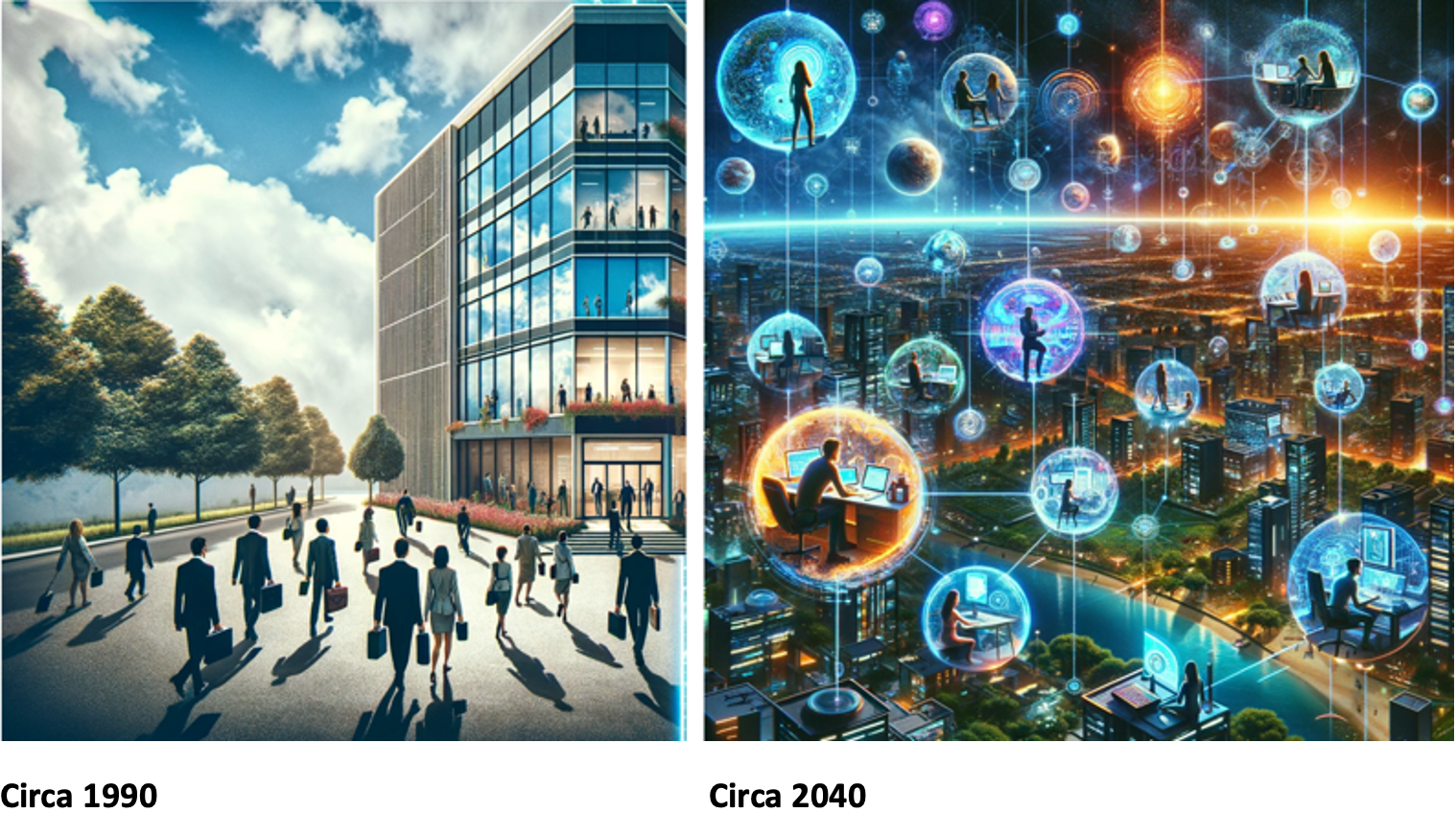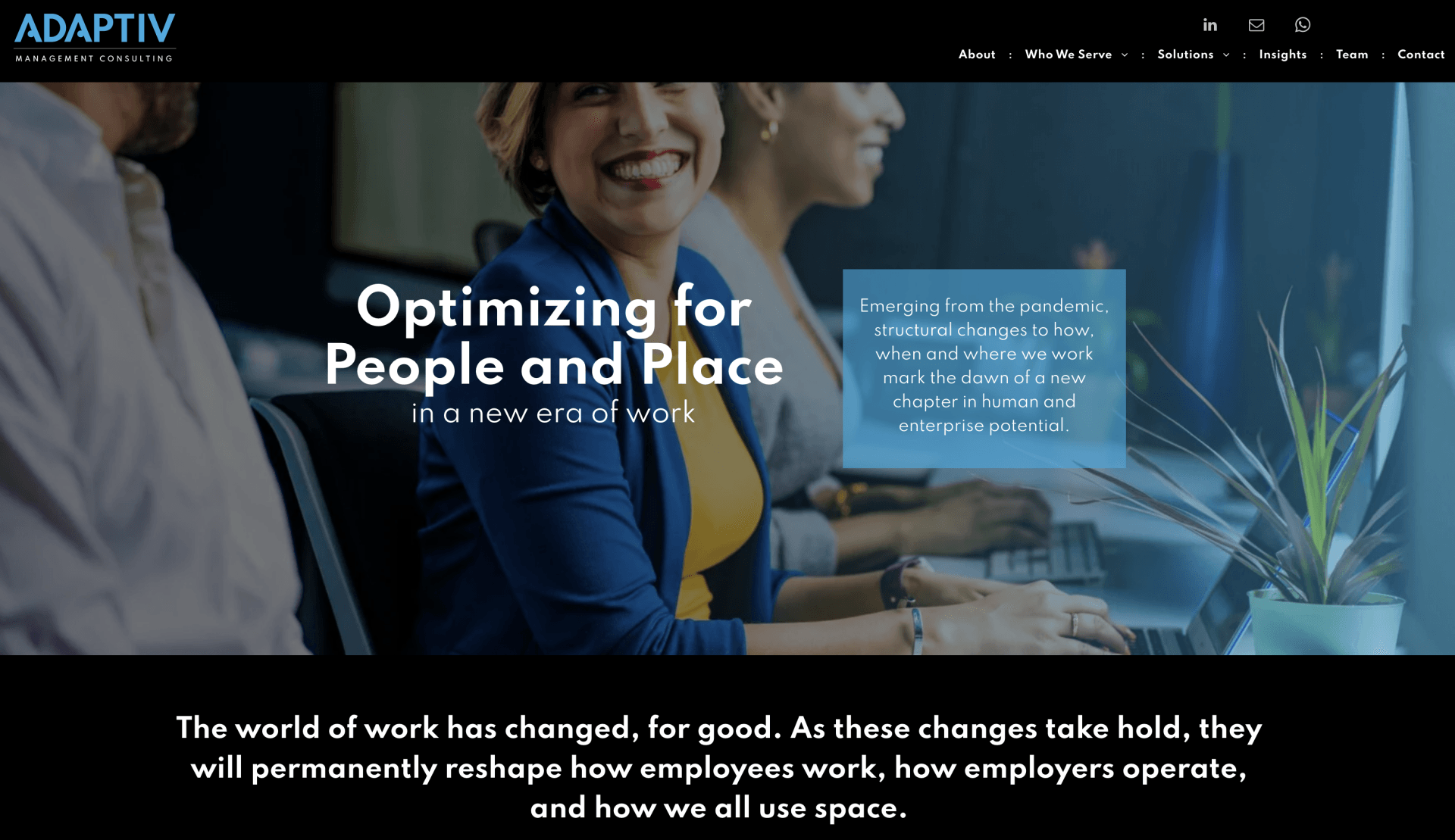Why Sensors + Digital Exhaust = Unbeatable Insights
The Complete Picture Requires Two Types of Data. Workplace intelligence is undergoing a profound transformation. Organizations seeking to optimize their workplaces have discovered that neither physical sensors nor digital system data alone provides the complete picture needed for truly informed decision-making. Only by combining these complementary data sources can companies unlock the full potential of workplace intelligence.

Physical sensors capture what's happening in physical spaces, while digital exhaust from collaboration tools, calendars, and HR systems reveals how employees are working virtually. When integrated, these data sources create a comprehensive workplace intelligence layer that drives strategic decisions across real estate, HR, IT, and operations departments.
The most successful workplace intelligence platforms now integrate both data types to provide insights that would be impossible with either source alone. This approach enables organizations to optimize their entire workplace ecosystem - both physical and digital - while supporting the hybrid work models that have become the norm.
How Leading Solutions Integrate Sensor and Digital Data
The most advanced workplace intelligence solutions employ sophisticated integration approaches to combine physical and digital data:
VergeSense's Occupancy Intelligence Platform unifies data from proprietary optical sensors with digital workplace applications, including Microsoft 365, Google Workspace, and over 50 other technology providers. Their "Workplace Assistant" analyzes combined data to provide personalized recommendations for workspace optimization. At the same time, their integration with Microsoft Places enables automatic release of unused meeting rooms based on actual vs. scheduled usage.
Density combines privacy-first depth sensors with digital workplace data through API integrations with booking and scheduling systems. Their analytics platform reveals how spaces are actually used versus intended, enabling data-driven decisions about space design and allocation.
XY Sense uses ceiling-mounted computer vision sensors that connect with booking platforms and workplace experience tools through their real-time occupancy API. Their sensors require 2-3x fewer units than competitors, resulting in lower total cost of ownership.
These integrated solutions typically employ a three-tier architecture:
- Sensing Layer: Physical sensors collecting real-world data
- Network/Edge Layer: Gateways pre-processing data and transmitting to cloud
- Cloud/Application Layer: Core integration platform combining physical and digital data
Most platforms use event-driven architectures where sensors and digital systems emit events when changes occur, enabling real-time updates and analytics. Data normalization techniques reconcile disparate data sources through canonical data models, feature scaling, and temporal alignment to create a unified view of the workplace.
Unique Capabilities Enabled by Each Data Source
Sensor data and digital exhaust each enable distinct metrics and insights that the other cannot provide:
Sensor-enabled metrics:
- Real-time space occupancy rates - Percentage of workspaces occupied at any moment
- Peak occupancy patterns - Maximum occupants in spaces during specific time periods
- Space utilization by type - Utilization rates of different space types
- Meeting room right-sizing opportunities - Mismatches between room capacity and typical meeting size
- Circulation and movement patterns - How people move through spaces
- Indoor environmental quality metrics - Temperature, humidity, CO2 levels affecting comfort
- No-show meeting rates - Percentage of booked rooms that remain unoccupied
- Traffic patterns and hotspots - High-activity areas requiring additional resources
Digital exhaust-enabled metrics:
- Digital collaboration patterns - Frequency, duration, and types of digital interactions
- Software and application usage - Which digital tools are most frequently used
- Virtual meeting time - Total hours spent in virtual meetings
- Digital communication networks - Who communicates with whom
- Document collaboration metrics - How frequently shared documents are accessed
- Digital workflow efficiency - Time spent on specific digital processes
- After-hours digital activity - Work performed outside standard hours
- Focus time metrics - Uninterrupted periods without digital collaboration
The true power emerges when these data sources combine to create metrics that neither could enable alone:
- Physical-digital presence correlation - Comparing physical presence with digital activity
- Collaboration effectiveness index - Combining in-person interaction with digital collaboration outcomes
- Space impact on digital productivity - Correlating environments with digital output
- Technology utilization by location - How digital tool usage varies based on physical location
- Meeting effectiveness metrics - Comparing in-person vs. virtual meeting outcomes
- Environment-productivity correlations - How physical factors affect digital work
ROI Comparison: Sensors vs. Digital Data Capture
The cost structures and ROI metrics for these approaches differ significantly:
Sensor implementation costs:
- Initial hardware: $100-500 per device depending on type
- Installation: Additional costs for wiring and infrastructure
- Coverage requirements: Varies by sensor type (one PIR sensor per room, one desk sensor per workstation, one camera/optical sensor per 500-1,000 sq. ft.)
- Ongoing costs: 5-15% of initial hardware cost annually for maintenance, plus software licensing ($0.05-0.50 per sq. ft. per month)
Digital data capture costs:
- Initial investment: Lower (leverages existing systems)
- Software licensing: $2-6 per user per month (e.g., Microsoft Workplace Analytics)
- Implementation time: 1-4 weeks for software integration (vs. 2-8 weeks for sensor deployment)
The ROI calculation shifts dramatically when considering the business outcomes enabled by each approach:
Sensor-only ROI examples:
- Fresenius Medical Care: Saved $6M annually through lease avoidance after sensors revealed only 20% utilization of headquarters
- Global Financial Institution: Reduced cleaning costs by 50% ($2M annually) using occupancy-based cleaning
- Rapid7: Saved $1.5M in buildout costs by modifying meeting room designs based on occupancy data
Digital-only ROI examples:
- Microsoft Sales Organization: Achieved 5.3% efficiency improvement saving $4.9M through digital collaboration insights
- Financial Services Company: 83% reduction in meeting inefficiency using digital collaboration tools
Combined approach ROI examples:
- Global Financial Services Company: Reduced ghost bookings by 30% by combining desk sensors with booking system data
- BCG: Saved $50K/month by integrating VergeSense sensors with TEEM and Outlook to automatically release unused bookings
The timeframe for realizing ROI also varies by approach:
- Sensor-based: Quick wins (0-6 months) in energy savings and meeting efficiency; major real estate savings (18+ months) from lease renegotiations
- Digital-only: Early gains (0-6 months) in meeting efficiency and collaboration; longer-term benefits (12+ months) in productivity and culture
- Combined approach: Accelerated ROI timeline with stronger early wins (3-6 months) and more substantial medium-term gains (6-12 months)
While both approaches offer significant value, organizations achieve the most substantial ROI with combined data strategies that leverage both physical sensors and digital data.
Creating More Valuable Insights Through Comprehensive Data
The evidence clearly shows that comprehensive data (sensors + digital exhaust) creates more valuable insights than either source alone:
- A global financial services company implemented sensors throughout their offices while analyzing Microsoft 365 usage data. By correlating physical presence with digital activity, they discovered that collaborative work was more effective when teams spent 2-3 days per week together in-person, specifically for complex problem-solving tasks. Digital productivity remained high on remote days, but innovation metrics were higher during in-office days.
- A technology firm used integrated data to optimize their real estate portfolio, discovering they could reduce their office footprint by 30% while improving collaboration. They identified that certain technical teams were more productive when co-located, while others showed no significant difference between remote and in-office work. This allowed them to implement targeted space assignments and save $2 million annually.
- A healthcare provider integrated sensor data with their electronic health record system activity, discovering that clinical staff productivity increased when workstations were positioned to allow both privacy and visibility. By redesigning nurse stations based on both physical movement patterns and digital work needs, they increased time spent on patient care by 23% while reducing documentation errors by 18%.
These examples demonstrate the limitations of single-source approaches.
Sensor-only limitations:
- Absence of context (shows presence but not purpose or productivity)
- No visibility into remote work effectiveness
- Inability to measure digital work output
Digital-only limitations:
- Physical context blindness (cannot capture environmental impact)
- Missing informal in-person interactions
- No insight into how physical conditions affect work experience
Supporting Cross-Functional Decision-Making
The integration of sensor data with digital exhaust enables truly cross-functional decision-making across departments:
Real Estate and Facilities
- Key metrics: Space utilization, cost per square foot, peak occupancy
- Decisions enabled: Portfolio optimization, space design, lease negotiations
- Example insight: Combining meeting room utilization data with calendar patterns revealed that larger conference rooms were only at 30% capacity, enabling reallocation of space to in-demand collaboration areas
Human Resources
- Key metrics: Collaboration patterns, work-life balance, team cohesion
- Decisions enabled: Hybrid work policies, talent strategies, workplace experience
- Example insight: Correlating in-office days with digital collaboration metrics revealed optimal in-office schedules for different teams based on their work patterns
IT and Technology
- Key metrics: Technology utilization, digital workspace effectiveness
- Decisions enabled: Technology investments, digital workspace design
- Example insight: Correlating physical presence with application usage showed that certain collaborative tools were underutilized in physical meetings, prompting training initiatives
Operations
- Key metrics: Operational efficiency, resource utilization
- Decisions enabled: Service delivery models, resource allocation
- Example insight: Combining badge data with sensor data and helpdesk tickets identified opportunities to optimize front desk staffing based on actual arrival patterns
The Future Demands Integration
The workplace intelligence market is evolving rapidly toward more integrated solutions that combine physical sensor data with digital exhaust from workplace systems. This convergence enables organizations to gain a comprehensive understanding of how their workplaces function across both physical and digital dimensions.
The most successful workplace intelligence strategies will be those that recognize the complementary nature of these data sources and leverage both to create a complete picture of the modern workplace - spanning physical spaces, digital tools, and the complex interplay between them.
As we move further into the era of hybrid work, organizations that embrace this integrated approach to workplace intelligence will be best positioned to create workplaces that truly support productivity, collaboration, and employee wellbeing while optimizing costs and resources.









